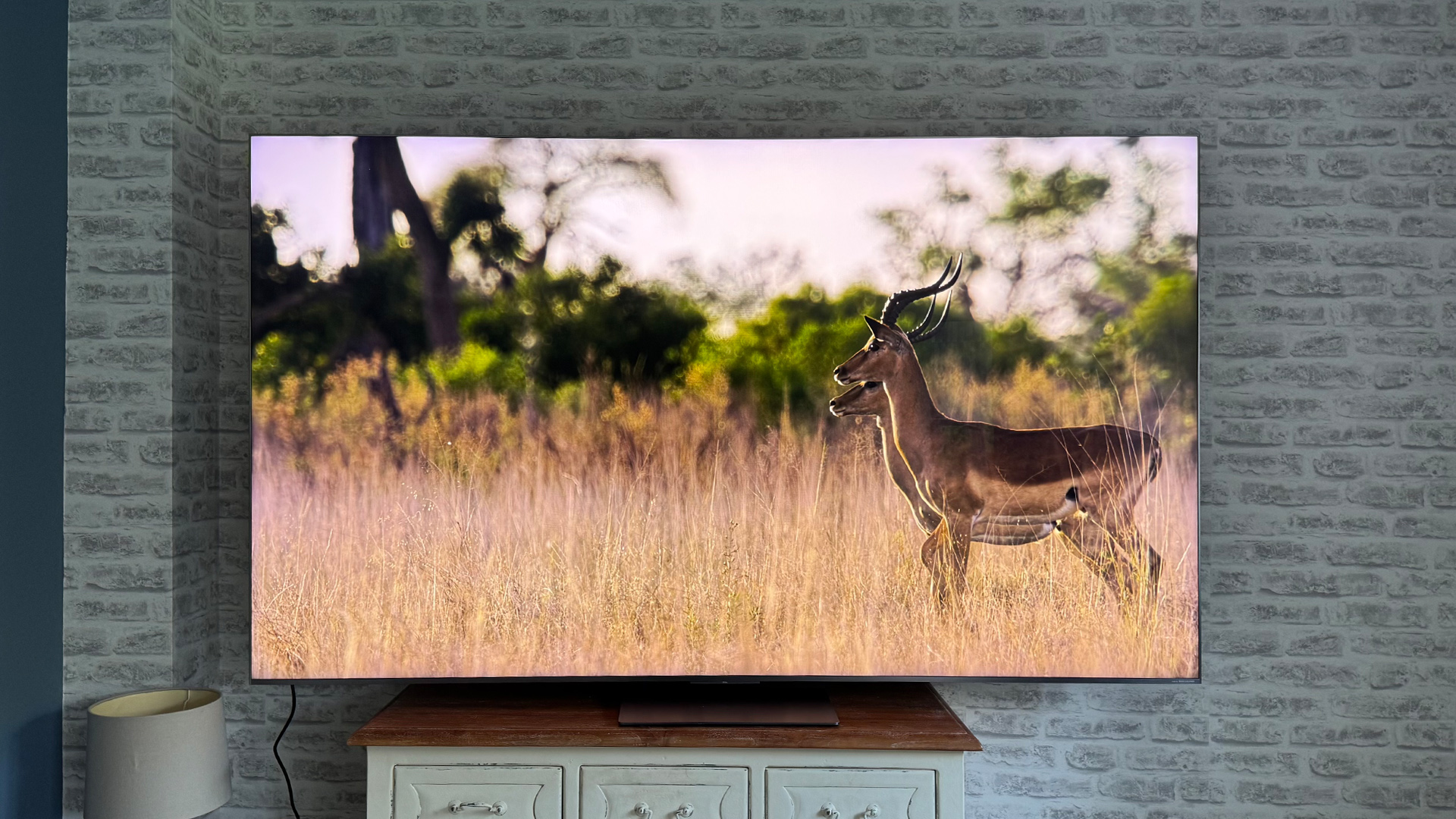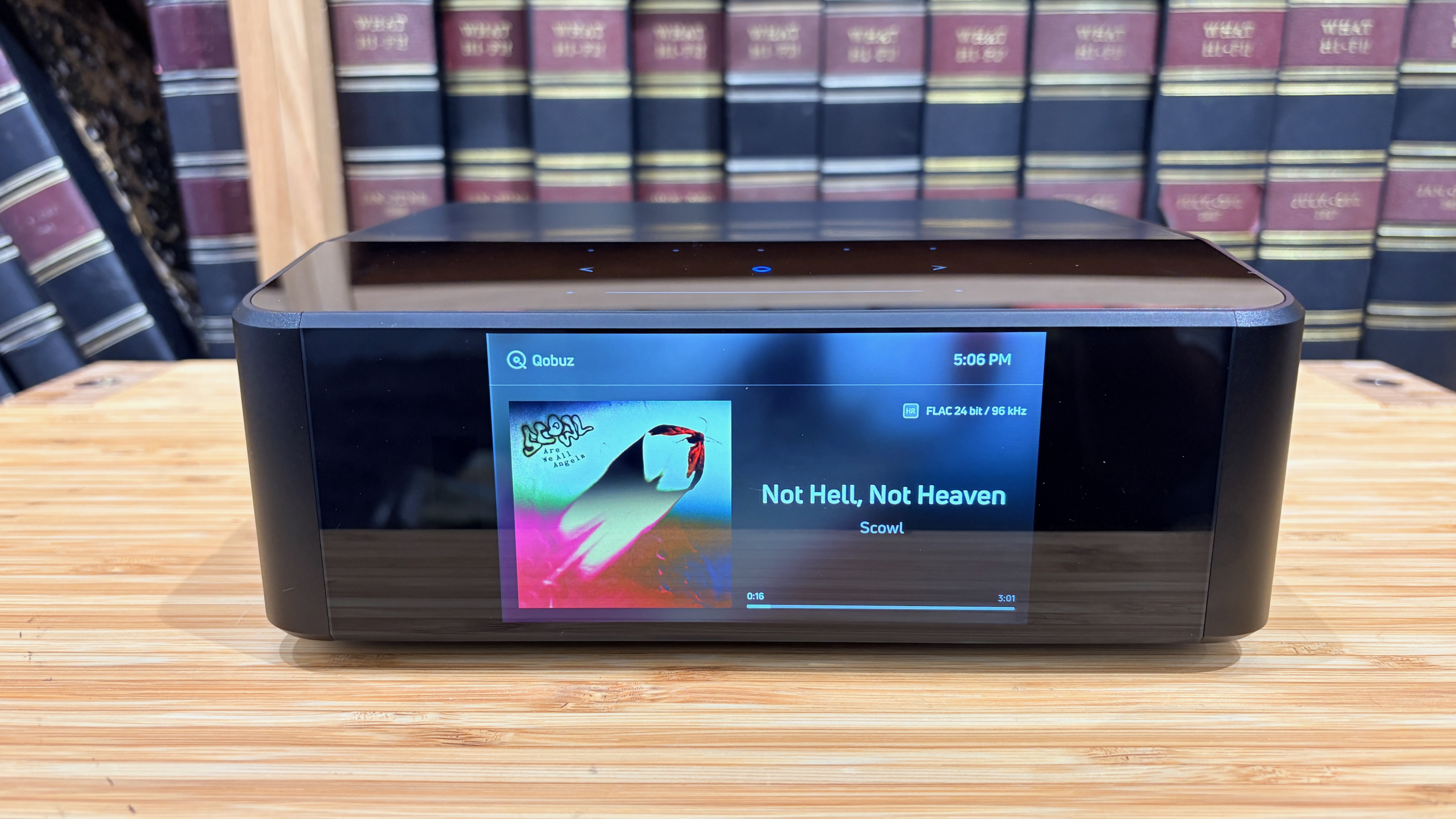What Hi-Fi? Verdict
While TCL’s flagship 85-inch TV oozes razzle dazzle, it can’t quite shake off the challenge of some of its own cheaper siblings
Pros
- +
Outstanding brightness and contrast
- +
Full HDR support
- +
Excellent gaming features
Cons
- -
Some backlight limitations
- -
Colour desaturation with very bright content
- -
Strong competition from the cheaper C7K range
Why you can trust What Hi-Fi?
TCL is having quite the year.
Of the five new TVs from the brand that we’ve tested this year, only one so far has received a What Hi-Fi? rating that isn’t five stars.
That one four-star set was the last TCL TV we tested, and one of the smallest and most technically modest models in the brand’s range, the 43-inch P7K.
Today, we’re following that up with a review of a model at the other end of the spectrum – the flagship-grade, 85-inch C8K, which pulls out all the technical stops to deliver a spectacular home cinema experience that’s about way more than mere screen size.
Price

Even though it’s TCL’s premium 85-inch TV for 2025, the 85C8K looks set to only cost £2199 when it arrives in the UK.
At the time of writing, while the set is available in the US (where it’s known as the 85QM8K), Australia and continental Europe, TCL UK still hasn’t formally confirmed the UK launch date. Instead, it’s currently still opting to sell last year’s 85-inch models.
Such low pricing for any 85-inch TV, never mind one as well specified as this flagship TCL, would have been unthinkable not so very long ago. These days, though, the 85-inch C8K actually finds itself up against some stiff competition – including from some of TCL’s own cheaper ranges.
The latest hi-fi, home cinema and tech news, reviews, buying advice and deals, direct to your inbox.
The outstanding 98-inch TCL C7K especially springs to mind, as it can be bought at the time of writing for just £1999.
That extra 13 inches of screen really makes a difference when it comes to cinematic impact, and the set’s picture quality is so good that the 85-inch C8K is going to have to pull out all the stops to beat it.
The 85-inch version of Sony’s excellent Bravia 7 Mini LED TV is now available for £2499, too, while Hisense’s 85-inch U8QTUK LCD TV is currently available for £2299.
Design

The 85-inch C8K does carry the look and feel of a flagship TV, though more because of its hefty build quality than any overt catwalk sensibilities.
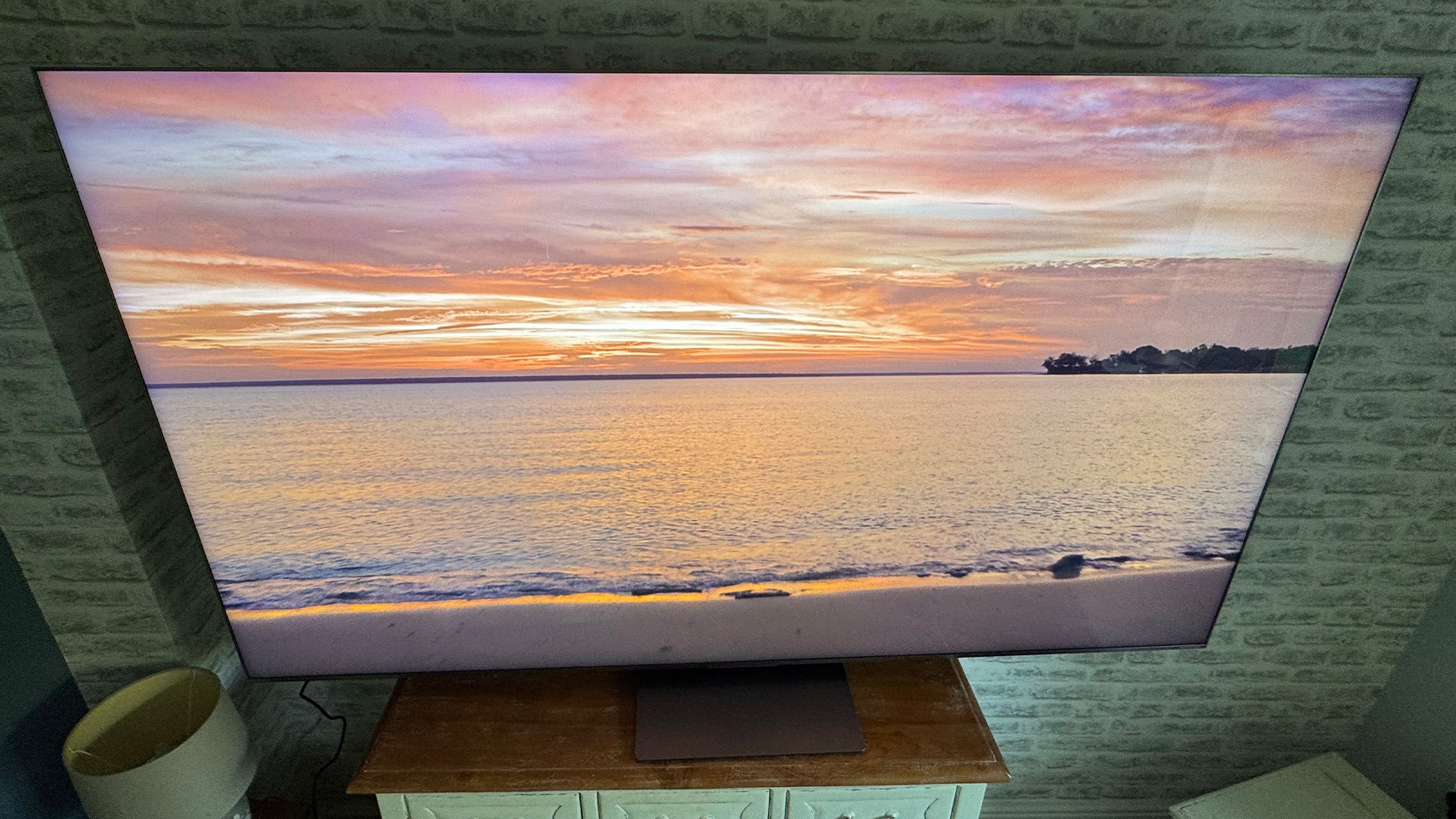
Size 85 inches (also available in 65, 75 and 98 inches)
Type Quantum Dot LCD
Backlight Mini LED (2880 dimming zones)
Resolution 4K
HDR formats HLG, HDR10, HDR10+, Dolby Vision
Operating system Google TV
HDMI inputs x 4 (x 2 48Gbps HDMI 2.1)
Gaming features 4K/144Hz, 4K/120Hz, VRR, ALLM, Dolby Vision game mode
Input lag 13.1ms at 60Hz
ARC/eARC eARC
Optical output? Yes
Dimensions (hwd, without stand) 107 x 188 x 5.3cm
The set is chunky around the back by today’s premium TV standards, and it sits slightly dourly on the substantial metal plate-style base attached under the screen’s centre.
The frame around the screen is actually very slender, though (even if it perhaps doesn’t quite live up to TCL’s ‘ZeroBorder’ claims), the metallic stand looks like it won’t take any prisoners (in a good way), and the set even manages to make a virtue of its depth thanks to its deep silvery sides and attractive grilled finish along its top edge.
The meaty screen is joined by a sleek, silver metallic remote control that feels lovely to hold. It’s pretty well laid out, too, with large, spacious buttons placed sensibly, and a selection of direct access keys to a selection of the most popular video streaming services.
Features

Despite its affordability by flagship 85-inch TV standards, the 85C8K doesn’t skimp on features. Which is just as well, given how much TCL’s step-down 98C7K has to offer.
At the 85C8K’s heart lies TCL’s new CrystGlow WHVA LCD panel design. This represents a near-total revamp of TCL’s previous LCD panels, and introduces such innovations as ultra-reflective new optical materials that TCL claims improve the screen’s light efficiency by as much as 97 per cent; massively improved levels of light control and light path purity reckoned to deliver five times the contrast possible with rival IPS types of LCD panel; and wide viewing angle technology that TCL says retains 40 per cent more colour saturation during off-axis viewing than regular LCD TVs do.
This wide viewing angle support and the ‘ZeroBorder’ slimness of the screen bezel represent the main areas of core panel design difference with the C7K.
The 85-inch C8K uses Mini LED lighting, as we’re starting to expect of any flagship LCD TV these days. This is backed up, though, by a much more extreme local dimming system than pretty much any other LCD TV – especially at the 85C8K’s price point – provides right now.
This finds the screen illuminated by no less than 2880 separately controlled local dimming zones, and a backlight system claimed to be capable of supporting brightness peaks as high as a massive 5000 nits. The 85-inch C7K, by comparison, has 1568 local dimming zones and a claimed peak brightness of 3000 nits.
The C8K happily continues TCL’s trend of supporting all four of the key high dynamic range formats: HLG, HDR10, HDR10+ and Dolby Vision. So, unlike sets from Sony, LG and Samsung, which only offer Dolby Vision or HDR10+, the 85C8K will always play the best available version of any source that it’s fed.

TCL continues to be good – very good – to gamers, too. The C8K supports 4K signals at up to 144Hz refresh rates, as well as, remarkably, 288Hz frame rates at Full HD resolution. Assuming you can find any PC or game able to handle such lickety-split refresh rates, of course.
There’s also support for VRR across the set’s vast frame rate range, including in the Freesync Premium Pro format, while the input lag of 4K/120Hz game feeds in the Game preset measures just 5.8ms. The rapid response time works with Dolby Vision games as well as HDR10 and SDR game feeds, too.
The C8K’s advanced picture system is driven by TCL’s latest AiPQ Pro processing, which extends its workings into everything from local dimming to motion processing, colour, contrast and sharpness. Though before any AV purists start having palpitations, every element of the image processor can have its strength adjusted or be fully turned off.
Smart features are provided by the Google TV platform, but unlike 2024’s TCL Google TV models, this time around, the British terrestrial broadcaster catch-up apps that Google TV is usually missing are present and correct. Though there’s no support for either Freeview Play or Freely in the UK.
The 85-inch C8K’s sound, finally, continues TCL’s new relationship with premium AV brand Bang & Olufsen. The 6.2.2-channel arrangement includes a pair of large circular low-frequency drivers facing straight out of the TV’s rear, as well as two up-firing speakers tucked underneath a grilled top edge to help deliver a more convincing soundstage with the Dolby Atmos and DTS:X soundtracks the TV is impressively capable of decoding.
While the basic channel configuration of the 85-inch C8K is the same as that of the C7K, and the speakers use the same four independent sound chips, rare earth neodymium Iron Boron magnets, and high energy voice coil designs, the more premium model’s speakers are fed with 90W of power versus the C7K’s 60W.
Picture
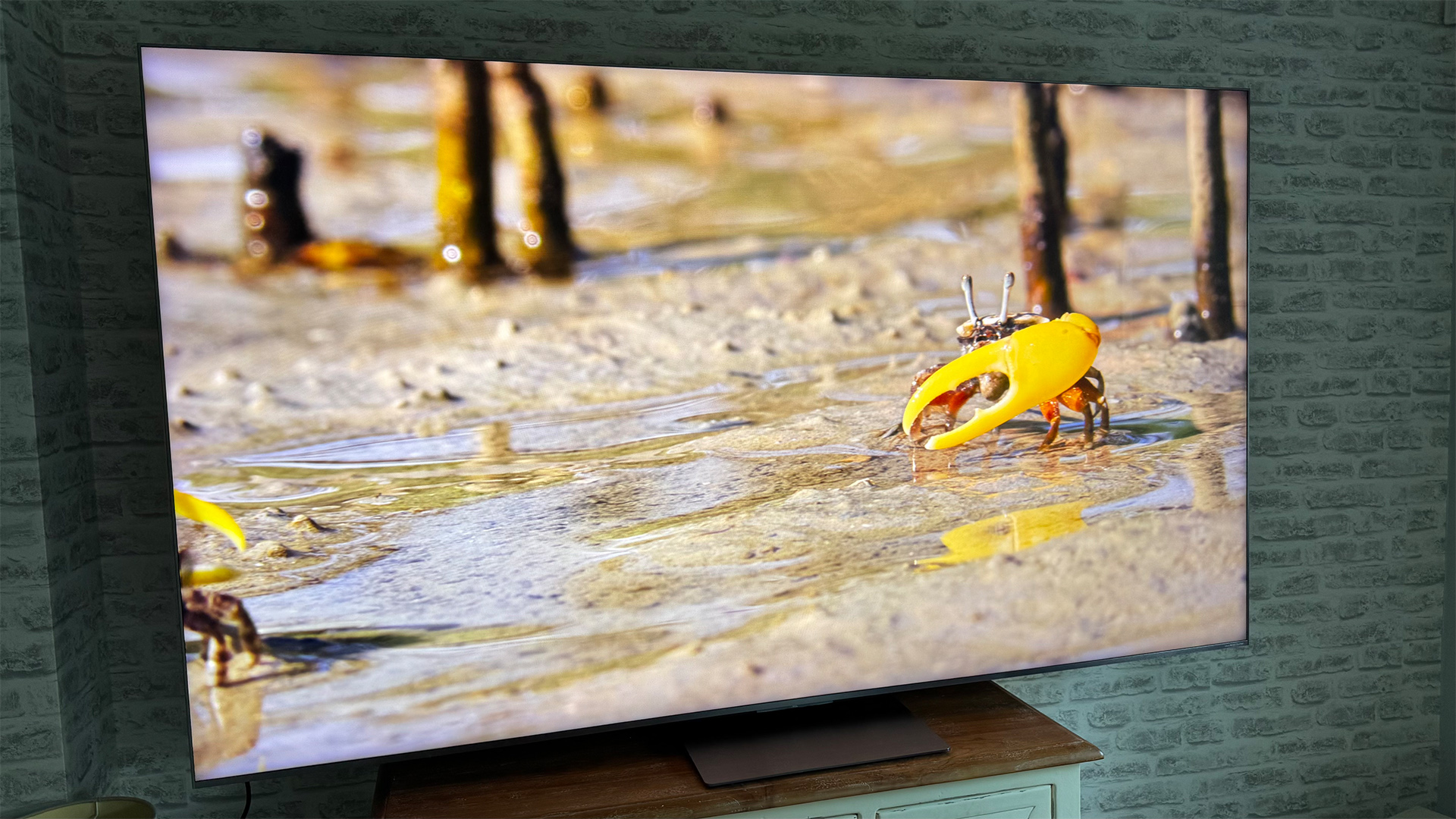
So does the 85-inch C8K manage to win minds and, more importantly, hearts even more than the beloved 98-inch C7K? Helpfully, our answer is a slightly confused ‘yes and no’.
Leading the yes department is the screen’s phenomenal brightness. We thought the 98C7K was a light-fest, but in side-by-side tests (yes, we actually found enough space to accommodate this!), the 85C8K pumps out clearly more light than TCL’s step-down model with both HDR and, depending on which picture preset you’re using, SDR content.
This brightness bonanza is apparent both in general HDR images, even where bright images flood the whole screen, and those lovably intense small HDR highlights such as reflections of sunlight on glass or metal, glints in people’s eyes, street lights, the moon, stars, candles and so on.
Most HDR content is currently not mastered to take advantage of the sort of aggressive brightness levels the 85-inch C8K is so seemingly effortlessly capable of reaching. But what we take to be a combination of the much-improved WHVA panel and improvements to TCL’s AI-infused processing contributes to an impressive dynamic tone mapping system that translates all HDR sources to the screen’s capabilities in its Standard preset really well. The image’s light range is greatly expanded, but there’s precious little evidence of common dynamic tone mapping ‘strain points’ such as colours starting to look over-cooked, certain tones falling out of balance with others, or subtle shading going missing in the most heavily saturated or darkest picture areas.
The 85C8K’s basic contrast performance in the Standard preset is usually pretty remarkable, too. The new panel design, extreme brightness and massive amount of local dimming zones combine to ensure that dark scenes that contain very bright highlights still also enjoy impressively deep blacks. Almost OLED-like, even, when the source content happens to gel particularly perfectly with the TCL’s backlight control system and new panel design.
Native 4K images typically look impressively sharp for such a large screen too, while the AiPQ Pro processor does a very decent, if not class-leading, job of upscaling HD sources to such a large screen, adding detail and density without causing unwanted processing side effects.
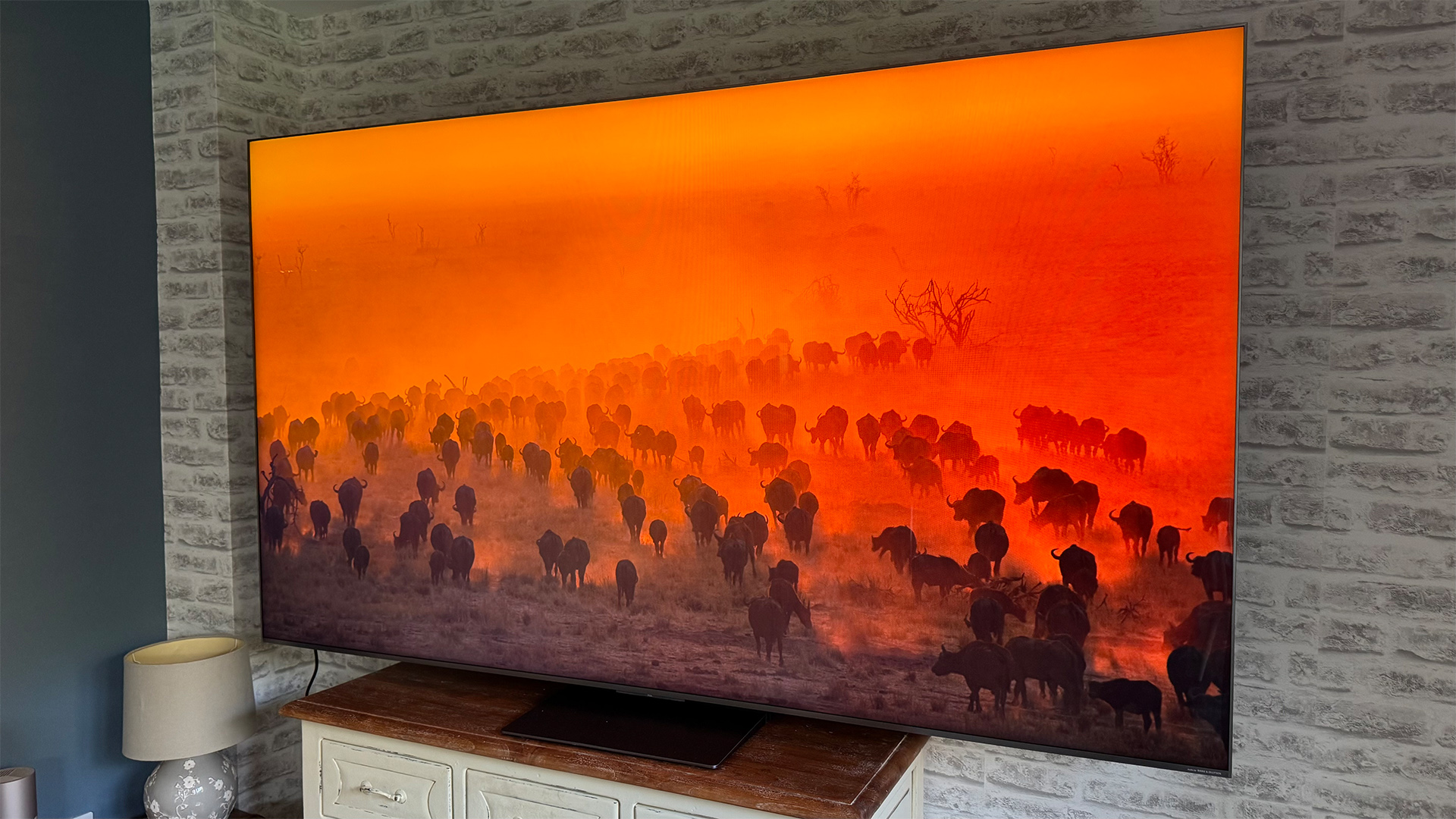
Compared with the 98C7K, however, the 85C8K’s extra brightness seems to cause colours to look generally a little cooler (bluer) in the default Standard mode that TCL has designed to show off the full range of its flagship 85-inch screen’s talents.
Surprisingly, colours generally look slightly less vibrant on the 85C8K than they do in the C7K’s Standard mode. As if, perhaps, the C8K’s extra brightness is pushing colour volumes a little beyond where the Quantum Dot colour system can comfortably go.
This can cause some colours to slip off tone a little, too, particularly when it comes to certain shades of green, which sometimes take on a slightly brown hue. Colours do hold up better from wide angles than they do on the C7K, though.
The 85C8K’s substantial extra brightness over the C7K also seems to put more pressure on the more expensive model’s backlight controls. Even though the 85C8K has more dimming zones, dark scenes can sometimes exhibit one of a number of pitfalls, from general greyness to mild clouding and inconsistency, moments of instability, mild detail clipping in the brightest picture peaks, and a tendency to reveal slightly more faint shadow details than you’re supposed to see. Motion can look a touch soft on the 85C8K, too, with both 24fps film titles and 60Hz sport.
At which point we need to stress that just because TCL’s 98-inch C7K is so outstanding for its money doesn’t mean that the 85-inch C8K isn’t still a very good TV by general standards. It’s still built on the same DNA, after all, that impressed us so much with the five-star 65-inch C8K a few weeks back. For much of the time, the 85C8K’s pictures, even in Standard mode, are flat-out spectacular.
The 85-inch C8K also helps us finish this section on a positive note by delivering slightly better images in its accuracy-focused Filmmaker Mode than the C7K does. This mode reins in the brightness quite a bit, but still looks slightly brighter than the C7K in its equivalent picture mode, while delivering deeper black levels that are almost completely free of any backlight blooming or other backlight distractions.
The set’s Game mode delivers a brilliantly responsive, bright, sharp and punchy experience, too, which joins with the screen’s epic size in really transporting you into whatever game world you’re playing in. Especially with 120Hz and higher titles, where the screen’s marginally soft motion is no longer in play.
Sound

The C8K’s extra power versus the C7K helps it get the most benefit from TCL’s new B&O collaboration.
It casts out a seriously large soundstage that spreads well beyond the edges of this already king-sized screen, for starters.
There’s a sense of height as well as width to this large soundstage, too, which helps it get more value from Dolby Atmos and DTS:X soundtracks than most TVs do. Especially as the speakers have the refinement, poise and understanding to populate the soundstage with lots of subtle, balanced, clean and accurately placed details.
This includes making sound seem to come from the screen, rather than the screen causing a large hole in the heart of the soundstage as can happen with some king-sized TVs.
The sound can go loud enough to deliver the same sort of cinematic scale that the 85-inch pictures do, and it has enough control over its volume to deliver a good sense of escalation during growing action scenes. Bass goes deeper and achieves more presence than it does on the C7K, too, and voices always sound clean and clear.
The sound can fall away a little during the densest, loudest moments, and the heaviest bass sounds can cause a bit of crackling. Voices can sound a bit dislocated from the image, too. These issues are only enough to cost the 85-inch C8K one sound mark, though; they don’t stop it from still being a strong-sounding TV overall.
Verdict
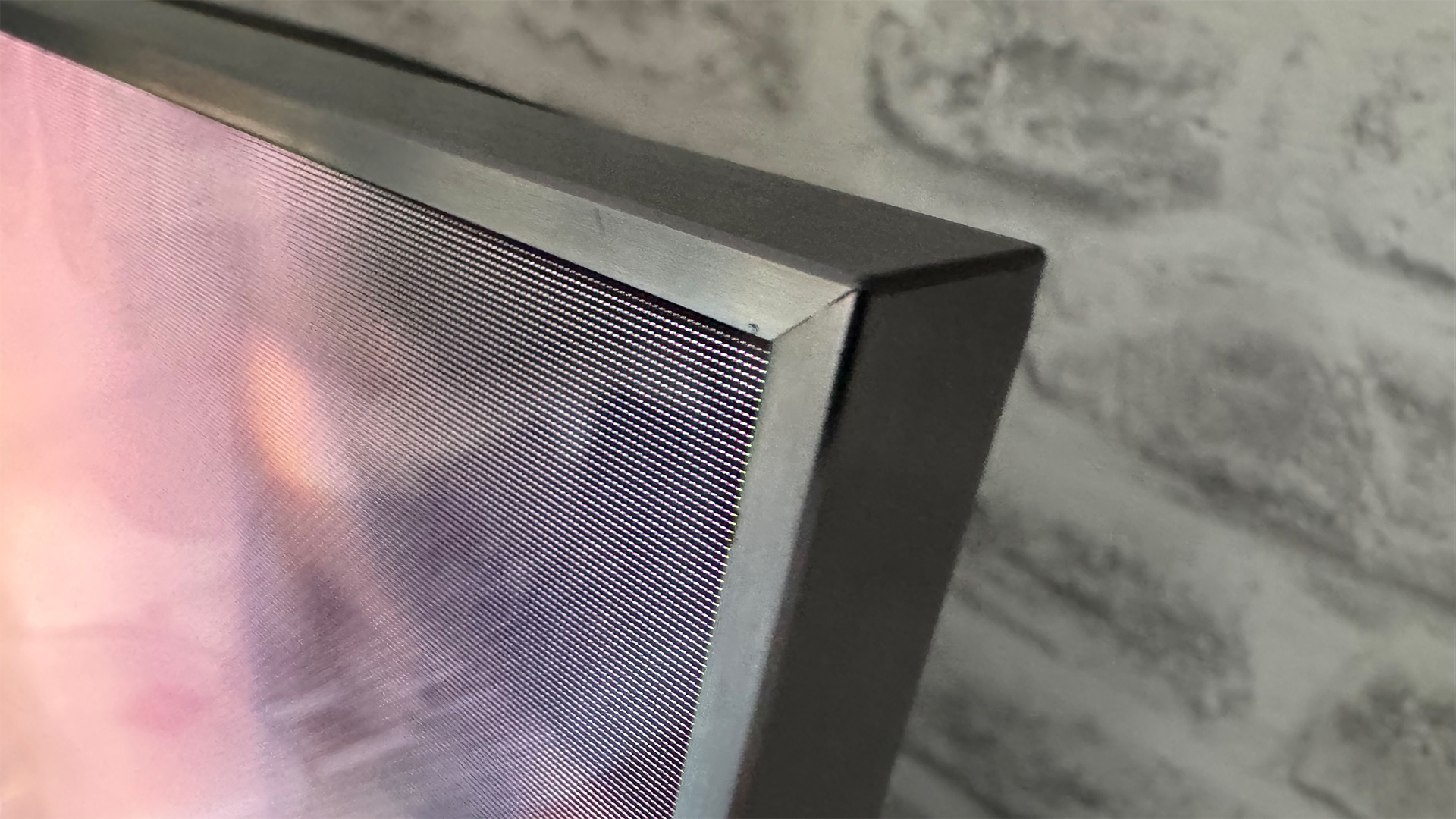
In most ways, the 85-inch C8K continues TCL’s imperious run of 2025 TV form.
It delivers levels of brightness, contrast, light control and gaming prowess that you won’t find on even the vast majority of premium 65-inch screens going for the same money, never mind an 85-inch one.
It’s hard to overstate the extent to which TCL has rewritten the TV price rule book this year, raising genuine questions over whether all of the other established TV brands will be able to stay in the game.
Luckily for those rivals, though, the sheer size of the 85C8K’s screen does expose the difficulties associated with delivering extreme brightness and colour in a way that the 65C8K’s smaller screen did, making it that rarest of TV things this year: a TCL TV that doesn’t quite bag our full five stars.
SCORES
- Picture 4
- Sound 4
- Features 4
MORE:
Read our review of the TCL 98C7K
Also consider the Sony Bravia 7
Read our Sharp 70GK4245 review
Best TVs: flagship OLEDs and budget LED sets tried and tested
John Archer has written about TVs, projectors and other AV gear for, terrifyingly, nearly 30 years. Having started out with a brief but fun stint at Amiga Action magazine and then another brief, rather less fun stint working for Hansard in the Houses Of Parliament, he finally got into writing about AV kit properly at What Video and Home Cinema Choice magazines, eventually becoming Deputy Editor at the latter, before going freelance. As a freelancer John has covered AV technology for just about every tech magazine and website going, including Forbes, T3, TechRadar and Trusted Reviews. When not testing AV gear, John can usually be found gaming far more than is healthy for a middle-aged man, or at the gym trying and failing to make up for the amount of time he spends staring at screens.
You must confirm your public display name before commenting
Please logout and then login again, you will then be prompted to enter your display name.
